Notes: Birkenhead Town station was situated on the Chester and Birkenhead line of the Birkenhead Joint Railway (BJR). When the station opened on 1 January 1889 the BJR was jointly owned by the Great Western Railway (GWR) and the London & North western Railway (LNWR). The Chester and Birkenhead line had originally been opened by the Chester & Birkenhead Railway (CBR) on 23 September 1840. At the time of opening the Birkenhead terminus was at Grange Lane just to the west of where Birkenhead Town would later be sited. On 23 October 1844 the line was extended to a riverside terminus at Monks Ferry. Such was the growth in traffic Monks Ferry had become inadequate by the 1870s and a new station was opened at Birkenhead Woodside on 31 March 1878.
 Birkenhead Woodside was ideally situated for the River Mersey and ferry services to Liverpool but it was not ideal for central Birkenhead. This point had been raised by the public and supported by the local press and it was to serve the town centre that Birkenhead Town station was built. Birkenhead Woodside was ideally situated for the River Mersey and ferry services to Liverpool but it was not ideal for central Birkenhead. This point had been raised by the public and supported by the local press and it was to serve the town centre that Birkenhead Town station was built.
The station was located on the south side of Grange Road to the west of Tunnel Road. The line from Birkenhead Woodside emerged from a double track tunnel at Grange Road and the Birkenhead Town station booking office was located directly above the tunnel portal fronting onto Tunnel Road.
A sloping footpath and a covered stairway connected the booking office to the down platform (Woodside direction) and a covered stairway to the up (Chester direction). Both platforms were of a length capable of accommodating main line trains. The Chester and Birkenhead line had become part of a through GWR route to London Paddington and express services were run to the capital and to other distant destinations by that company. The LNWR also ran long distance services from Woodside to destinations including London Euston.
Both platforms had waiting facilities in the form of a brick and sandstone building with a slate roof. Canopies were also provided. There was a signal box on the down platform towards the northern end.
To the rear of the up platform was the Monks Ferry line of 1844 which also entered a tunnel towards the north end of the station. The Monks Ferry tunnel was only a single track bore which had been one of the limiting factors that had led to the opening of Woodside.
 To the rear of the down platform, at a slightly higher elevation, was an engine shed that dated back to the earliest days of the line. The Chester & Birkenhead Railway opened Grange Lane engine shed on 23 September 1840. The shed had five roads that had originally been shared between the CBR (3 roads) and the Grand Junction Railway (2 roads). It became a GWR/LNWR Joint shed 20 November 1860, and was extended several times during a working life. The shed had closed before Birkenhead Town station opened in 1878, when a new 16 road, joint shed had opened at Mollington Street. The original shed became a wagon works and the building of Birkenhead Town station took some land away from it. To the rear of the down platform, at a slightly higher elevation, was an engine shed that dated back to the earliest days of the line. The Chester & Birkenhead Railway opened Grange Lane engine shed on 23 September 1840. The shed had five roads that had originally been shared between the CBR (3 roads) and the Grand Junction Railway (2 roads). It became a GWR/LNWR Joint shed 20 November 1860, and was extended several times during a working life. The shed had closed before Birkenhead Town station opened in 1878, when a new 16 road, joint shed had opened at Mollington Street. The original shed became a wagon works and the building of Birkenhead Town station took some land away from it.
The December 1895 timetable showed that Birkenhead Town was well served by long distance and by local trains.
Although there had been much public agitation for the station it was mostly used for setting down.
By 1922 the station was being served mostly by local trains running between Woodside and Chester, Helsby, Hooton and West Kirby. There were 19 up and 22 down trains Monday-to-Friday with some extra services on Saturdays. No trains called on Sundays.
On 1 January
1923 the LNWR was absorbed into the London Midland & Scottish Railway (LMS) but the GWR continued as a company (although it absorbed many smaller companies).
The LMS timetable for the summer of 1932 showed 30 up and 29 down trains Monday-to-Friday. On Saturdays there was an extra up and down train. No trains called at Birkenhead Town on Sundays.
During the Second World War there was a reduction in services at Birkenhead Town and the station was closed completely on 7 May 1945.
The up platform was demolished in the late 1950s and the down a little later. The street level building survived until the late 1960s when major road works were carried out as part of an improvement scheme at the Birkenhead portal of the Birkenhead - Liverpool tunnel.
 The original locomotive depot survived for a period as an industrial premises but had been demolished by the 1980s. The original locomotive depot survived for a period as an industrial premises but had been demolished by the 1980s.
The line
continued in use until the closure of Birkenhead Woodside on 5 November 1967 after
which the tracks were lifted. The station site was still there in 2014 lost amongst
the complicated array of approach roads to the Birkenhead - Liverpool
road tunnel. However behind the advertising hoarding remnants
of the ticket office with its glazed brick can still be seen.Also visible are the tunnel mouths of the Woodside and the Monks
Ferry tunnels although both are partly filled in.
Tickets from Michael Stewart
To see a table showing passenger trains that served Birkenhead Town station in the summer of 1932 click here
To see other stations on the Birkenhead Woodside to Chester line click on the station name: Birkenhead Woodside, Birkenhead
Monks Ferry, Tranmere,
Rock Lane, Hooton, Ledsham, Mollington & Upton-by-Chester |

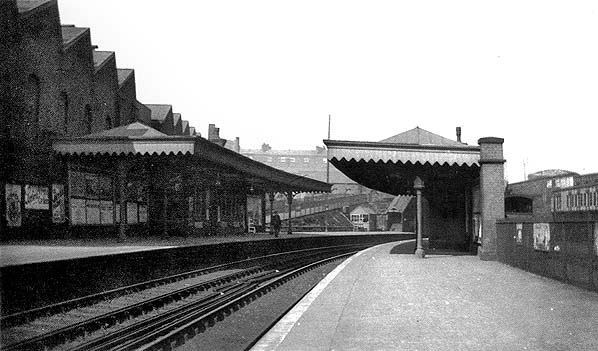
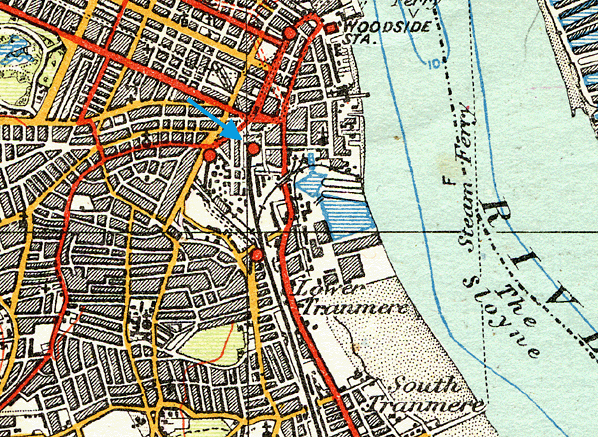
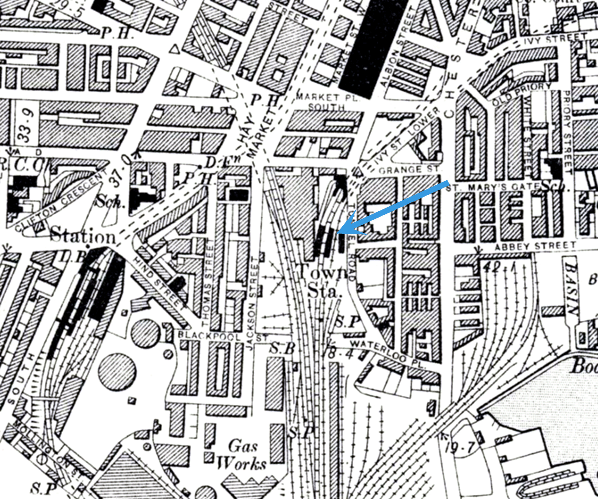 Birkenhead
Town station shown on a 6-inch scale map from 1898.
Birkenhead
Town station shown on a 6-inch scale map from 1898.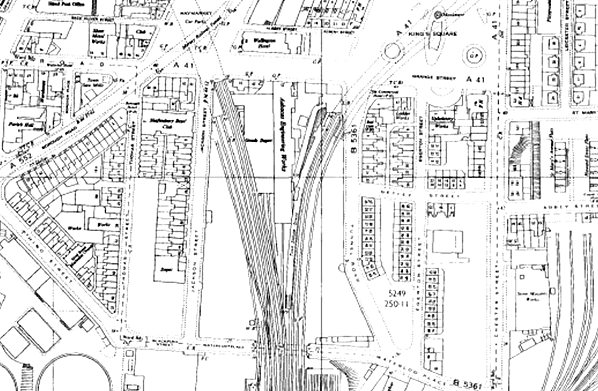
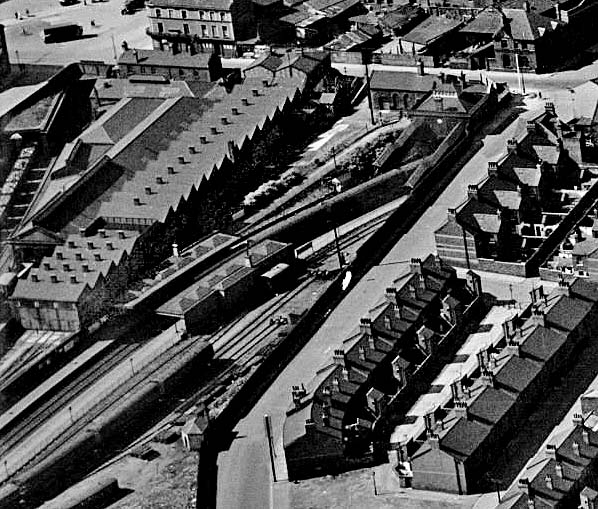
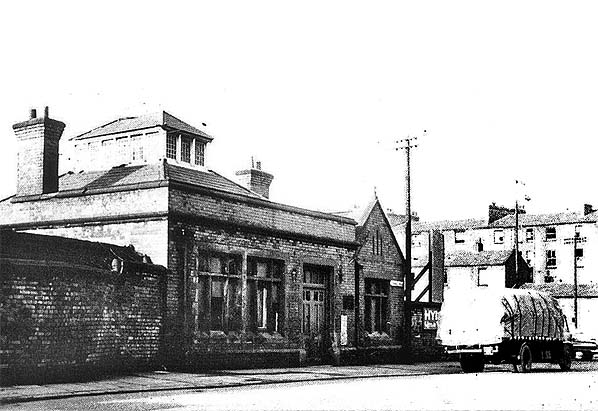
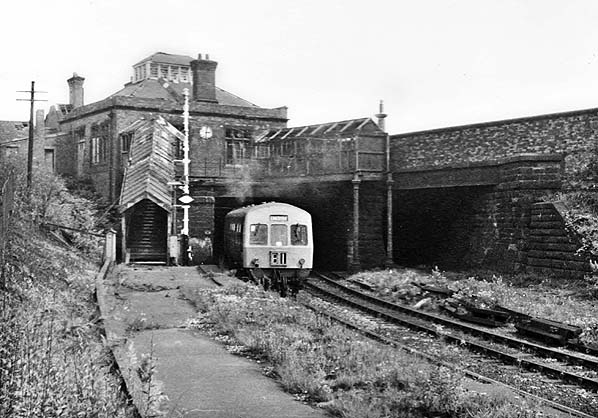
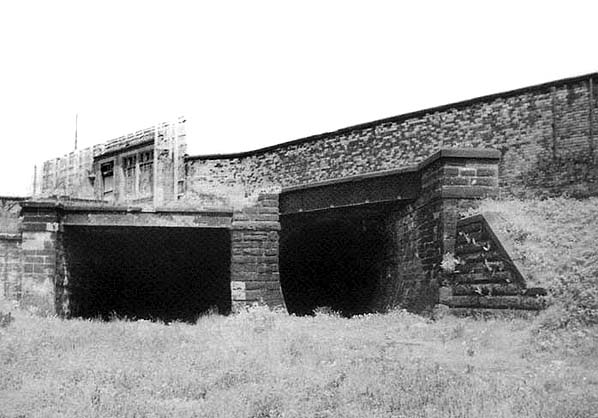
town3.jpg)
.jpg)
 Home Page
Home Page  Birkenhead Woodside was ideally situated for the River Mersey and ferry services to Liverpool but it was not ideal for central Birkenhead. This point had been raised by the public and supported by the local press and it was to serve the town centre that Birkenhead Town station was built.
Birkenhead Woodside was ideally situated for the River Mersey and ferry services to Liverpool but it was not ideal for central Birkenhead. This point had been raised by the public and supported by the local press and it was to serve the town centre that Birkenhead Town station was built.  To the rear of the down platform, at a slightly higher elevation, was an engine shed that dated back to the earliest days of the line. The Chester & Birkenhead Railway opened Grange Lane engine shed on 23 September 1840. The shed had five roads that had originally been shared between the CBR (3 roads) and the Grand Junction Railway (2 roads). It became a GWR/LNWR Joint shed 20 November 1860, and was extended several times during a working life. The shed had closed before Birkenhead Town station opened in 1878, when a new 16 road, joint shed had opened at Mollington Street. The original shed became a wagon works and the building of Birkenhead Town station took some land away from it.
To the rear of the down platform, at a slightly higher elevation, was an engine shed that dated back to the earliest days of the line. The Chester & Birkenhead Railway opened Grange Lane engine shed on 23 September 1840. The shed had five roads that had originally been shared between the CBR (3 roads) and the Grand Junction Railway (2 roads). It became a GWR/LNWR Joint shed 20 November 1860, and was extended several times during a working life. The shed had closed before Birkenhead Town station opened in 1878, when a new 16 road, joint shed had opened at Mollington Street. The original shed became a wagon works and the building of Birkenhead Town station took some land away from it. 
 The original locomotive depot survived for a period as an industrial premises but had been demolished by the 1980s.
The original locomotive depot survived for a period as an industrial premises but had been demolished by the 1980s. 

